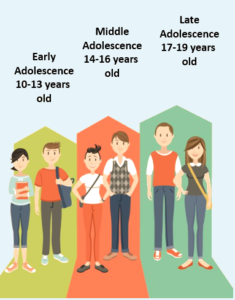Introduction
Humans are sexually dimorphic i.e., they have two distinct sexes- male and female. This dimorphism is seen in humans in favour of sexual reproduction which is the main reason for the diversity among humans. Humans progress through a transitional stage known as adolescence as they develop from childhood to adulthood and reach reproductive maturity. Beginning at age 10, adolescence lasts until age 19, after which a person is regarded as an adult. Hormonal changes are the main cause that affects physical appearance and aid in the development of reproductive characteristics.
Secondary Sexual Characteristics
A group of physical traits that separate individuals of one sex from those of the other sex within the same species is known as secondary sexual characteristics. They are necessary for sexual presentation but not directly engaged in reproduction. Males typically attract females for sex, and most of the time, females bear children. Some secondary sexual traits in people include males with facial hair and voice alterations, as well as females with huge breasts and rounded hips. Through adolescence, these characteristics start to emerge.
For more help, you can Refer to our video in Class 8 Science in Lesson no 10. Check out the video Lesson for a better understanding.
Stages of Adolescence
There are 3 stages of adolescence they are-
-
-
-
- Early puberty (ages 10 to 13): At this time, the majority of people experience weight gain and height growth. In females, the hips and breasts develop. Males develop a deeper voice as well as larger Penis and Testicles.
- Middle puberty (ages 14 to 17): During this time girls stop growing physically in terms of weight and height while males continue to grow in height and weight. Females’ menstrual cycle becomes regular and facial acne affects both sexes equally.
- Late puberty (ages 18 to 21): During this stage, the majority of people suffer decreased physical growth. They were already tall, and they are emotionally more stable than middle adolescence teenagers
-
-

Human males and females show different sexual characteristics as given below-
Secondary Sexual Characteristics of Females
Estrogen‘s effects on females lead to secondary sexual traits. The following are secondary sexual characteristics seen in women:
- Breast enlargement
- rounded Hips
- A leaner upper torso
- A pitched high voice
- Hair in pubic and underarm regions
Secondary Sexual Characteristics of Males
Secondary sexual traits in men are caused by testosterone produced in the testes. The hypothalamus and the secretions of the pituitary gland regulate testosterone in turn. Males’ secondary sexual traits include
- the presence of body hair (arms, chest, and pubic hair)
- facial hair, such as a beard and moustache
- the deep voice brought on by laryngeal expansion,
- a body having enlarged upper body muscles (chest)
- The growth of Adam’s apple.
Summary
The physical attraction between the opposing sexes is the primary goal of sexual dimorphism. Some examples of sexually dimorphic traits in the animal kingdom are the colourful plumage of many bird species and the antlers of reindeer. Human life goes through various growth stages, and a variety of hormones work together to help us reach reproductive maturity. Even while male and female reproductive organs (testes and uterus) are present from birth in humans, reproduction is not feasible until the person reaches adulthood. The period between childhood and adulthood known as adolescence is marked by a range of physiological, physical, behavioural, and psychological changes in a person which gives them the capability to generate the next generation.
Frequently Asked Questions
1. Differentiate between Puberty and Adolescence
Ans: Puberty- Puberty is a condition where an individual reaches reproductive maturity. It is a result of hormones and is more focused on sexual characteristics.
Adolescence- The interval between childhood and adulthood is known as adolescence. Physical, behavioural, and cognitive thinking all undergo a transition. Adolescence deals with both secondary sexual traits as well as the emotional well-being of individuals.
2. What Hormones Regulate Secondary Sexual Traits?
Ans: Following are the hormones with regulating sexual traits in humans
- Male sex hormone testosterone, secreted by the testicular Leydig cells, gives men their secondary sexual traits.
- Secondary sexual traits in women are brought by the female sex hormone estrogen, released from the ovaries.
- Follicle-stimulating hormone (FSH) and luteinizing hormone (LH) from the pituitary gland, which is regulated by gonadotrophin-releasing hormone (GnRH) of the hypothalamus, control the secretion of estrogen and testosterone.
3. What Causes Face Acne to Appear in Adolescence?
Ans: As a result of hormonal changes, adolescents’ have overactive oil glands. These oil glands release sebum which clogs the skin pores and hence creates face acne or pimples.